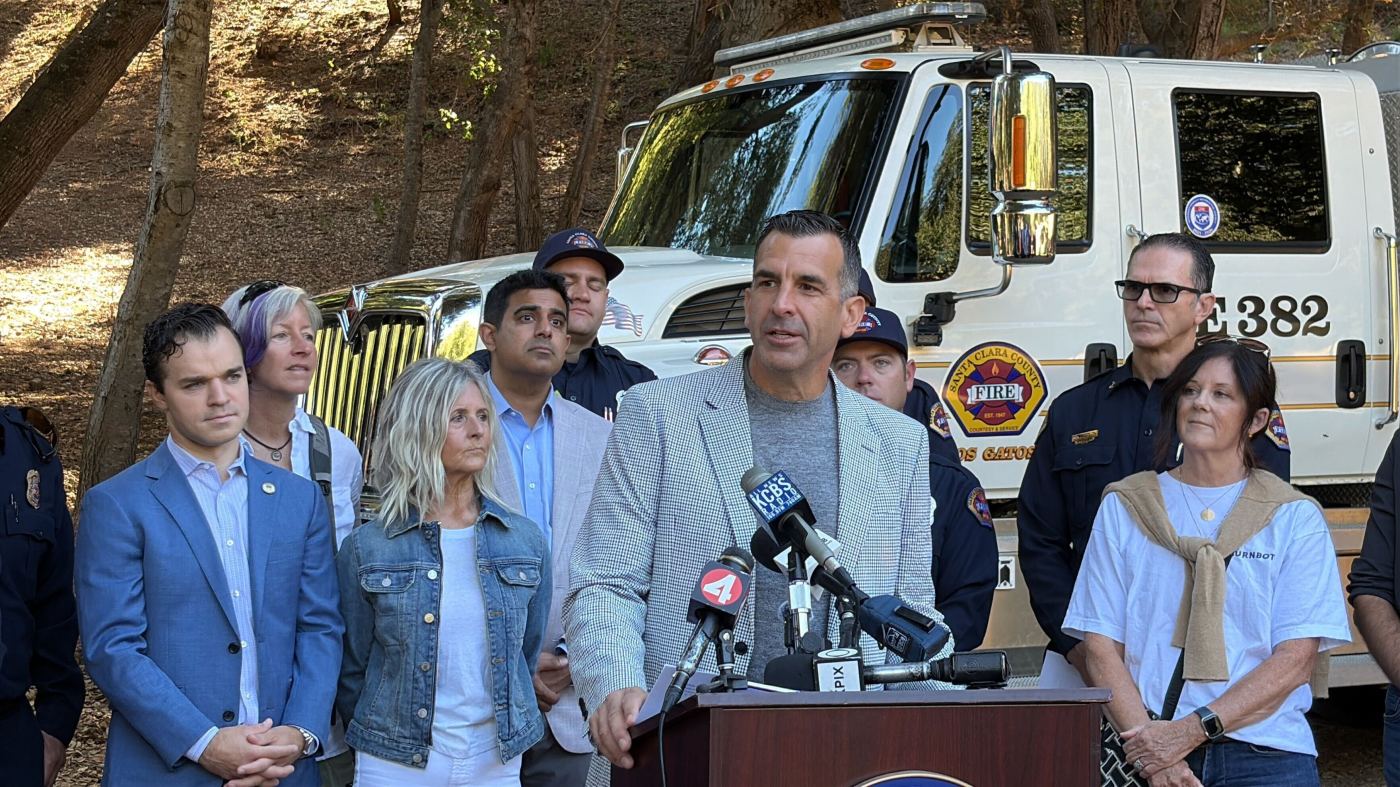
A new wildfire resilience partnership is a regional effort by Congressman Sam Liccardo to address the threat of wildfires in West Santa Clara Valley in the face of a lack of federal funding.
Liccardo announced the partnership during an Aug. 20 press conference at St. Joseph’s Hill Preserve in Los Gatos. It includes the governments of Los Gatos and Saratoga, the Santa Clara County Fire Department and the Santa Clara County FireSafe Council. Liccardo represents California’s 16th Congressional District, which extends along the coast from Pacifica and through the Santa Cruz Mountains and includes Saratoga, Los Gatos, Campbell and parts of San Jose.
Related Articles
Air attack stifles wildfire in rugged terrain above Corralitos
Local agencies work to spark West Valley residents’ interest in wildfire mitigation
Pickett Fire containment rises to 21% as Napa County issues health emergency over debris
Garnet Fire: Firefighters try to corral forest blaze as lightning strikes bring risk of new ignitions
Pickett Fire: Fire crews increase containment to 17%
While acknowledging that there is a lack of federal funding for helping communities prepare for wildfires, Liccardo said he hopes to act as a “federal partner” to help local governments determine what regional projects should be prioritized or need federal aid and help ensure they get the needed funds.
“if we’re working together to get environmental clearance on critical projects, to get permitting, to make sure we’re prioritizing the biggest-impact projects regionally, and we’re doing it in advance of the time money may be available, whether it’s next month or perhaps with the next Congress, one way or another, we’re going to be at the front of the line,” Liccardo said.
Liccardo told this news organization that the advancing threat of climate change has led to a funding gap for related preparedness programs, since cities may not have ever “had resources to deal with something on this massive a scale.” With all the cities in his district dealing with different environmental issues, he added, it can be difficult to divide the pot in an equitable way.
“You love all your children equally, so you dish out your community funding grant, you approve of proposals and recommend them through the preparations pipeline in a way that offers some kind of equity as defined by geographic and other means, and it’s always inadequate,” Liccardo said.
Los Gatos has made several efforts to reduce wildfire risk at the local level, including starting a citizens’ Wildfire Advisory Committee. Mayor Matthew Hudes said there are five components to wildfire preparedness that need significant investment: fuel reduction and vegetation management, evacuation preparation, an audible communications system, defensible space, and education and community outreach.
Hudes said most direct federal funding goes toward specific programs for fuel reduction and vegetation management and other indirect activities for overall emergency preparedness and communication. He added that Los Gatos received $6 million in matching grants to help clear around 31 miles of public roadway of potential tinder through the Federal Emergency Management Agency, or FEMA. However, the funding was held up in January, leading the town to sue to release it. The funding has since been freed up, Hudes said, but the town is “going to need more and request more.”
Since the town hired emergency manager Chris Todd, council also reallocated $1 million from the capital budget to the operating budget to use for emergency programs. Hudes confirmed that the town is looking for funding outside the federal government through grants, but he said he was concerned about being able to meet the matching requirements for some.
“Los Gatos has a long history and a long history of fires,” Hudes said at the Aug. 20 press conference. “We don’t forget what we have learned, and we always strive to be better prepared and better respond.”
Similarly, Saratoga Mayor Belal Aftab said federal funding could help with infrastructure issues for houses in that city’s hillsides. Aftab said he met with Liccardo in January to ask for support in road hardening, maintenance of retaining walls and vegetation and fuel reduction. He added that one-fourth of Saratoga’s hillside area is in the Wildlife Urban Interface, or WUI, which means that homeowners are required to meet additional building code requirements for the WUI and fire code requirements for living in a high or very high fire hazard zone per Cal Fire’s designation.
Aftab said the city identified about five roads that would each require $2 million to $3 million to upgrade. The Saratoga mayor said the city is putting $250,000 aside every year toward that project but is still asking Liccardo’s office for further funds.
“Hopefully, we get to a point where we have enough funds to do a big project, while at the same time doing maintenance work and hoping there isn’t a major event, like an earthquake that knocks out a road or a storm that knocks out a road,” Aftab said.